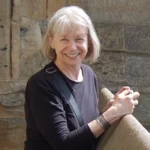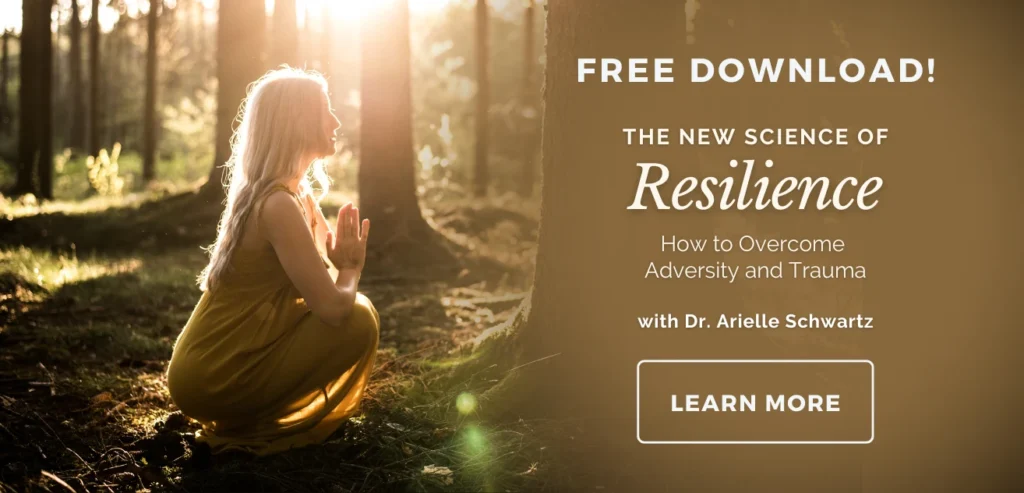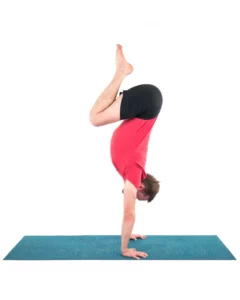Practice Contentment: A Novel New Year’s Resolution

Article At A Glance
It’s a new year. The clean, precise energy of January has replaced December’s animal urge to fight the darkness by drinking sparkling things and eating After Eight mints. Now we’re in the season of setting goals. For years, my yoga goals went like this: I will practice every day. I will do Headstand Pose (Sirsasana) in the middle of the room, and I will bring my head to my shins in seated forward bends. I will finally get strong enough to do Yoga Pushups (Chaturanga Dandasana). Not any more. What they morphed into and why it all changed is a longer story. But the first step was making the resolution that I will practice contentment.
This may seem odd if you think of contentment as a state that will arrive when certain conditions have been fulfilled, but from a yogi’s perspective, contentment is a practice. In Sanskrit, it’s Santosha, the second of the five Niyamas, or observances, that Patanjali outlines in the Yoga Sutras. And contentment is indispensable in creating the state of mind necessary for practicing yoga.
Is Contentment Antithetical to Progress?
Isn’t it discontent that drives us to improve? Human beings thrive on challenge, and there is no standing still. Either our practice grows or it shrinks. Why move forward if you are happy where you are now? But just as in asana, the obvious direction isn’t always the right one. When we wish to stretch up, we first press down into the ground. And when we’re extending toward the right, we first take our weight and awareness back to the left.
In the same paradoxical way, practicing contentment helps us sustain the fire of tapas, the burning zeal we need to sustain our practice. Far from making us self-satisfied and indolent, contentment helps to quiet our minds. And it’s a shorter step to the mat from that quiet space than it is from the busy mind of discontent.
A 5-Minute Practice for Contentment

So my resolution for the new year is an exercise in contentment. If you only have five minutes in your day, then just sit and do this practice. You can do your sitting in a chair, just as long as your spine is long.
- First, settle yourself in a comfortable seated position, with your lower body releasing downward and your spine lifting.
- Bring your palms together, the base of your thumbs to the base of your sternum.
- Close your eyes and soften them away from your eyelids. Imagine your brain cells softening and releasing down toward your heart center. Soften your jaw, and let the root of your tongue release inward and down.
- Exhale and let go of the past. It can’t be fixed. It doesn’t need to be hidden. Accept that your past is yours only, your unique circumstance to work from, and say yes to it, then let it go.
- Now exhale and let go of the future.
- Turn off the voice that says: “it’s not going to be okay,” and then the voice that says: “when I get my new practice space, lover, baby, car, ability to do this pose, then I will be happy.”
- Spend a moment being grateful for the mat itself, for the space to roll it out in, for the gift of yoga, the freedom to practice, and the availability of teachers.
- None of these could be taken for granted as little as 50 years ago.
- Then find contentment in your own body, in the poses you can do, in your growing awareness. Feel the quiet and peace of contentment, and carry that peace with you as you either move into your practice or into your day.
- When you end your practice, take a moment to feel contentment for what you have achieved, even if it was only showing up on a day when it would have been much easier to give the mat a miss.
Why Practice?
Practicing contentment helps us learn that happiness, in the words of Marcus Aurelius, “is an inward power of the soul” and not a reflection of what we own, where we work, or who loves us.
All the time, everywhere, but especially when you come face to face with your difficult poses. In Light on Life, B.K.S. Iyengar writes, “Let the goal be to reach perfection but be content with a little progress toward perfection every day.”
Also, read...
Teaching Svadhyaya: 3 Ways to Encourage Self-Study in Yoga
In Celebration of Gray-Haired Yoga – Busting the Myth of the Yoga Body
Related courses

Eve Johnson taught Iyengar Yoga for 18 years before being introduced to Spinefulness in 2016. Convinced by the logic, clarity, and effectiveness of Spinefulness alignment, she took the teacher training course and was certified in July 2018. Eve teaches Spineful Yoga over Zoom and offers an online Spinefulness Foundations course. For course information, go to http://spinefulness.ca.




